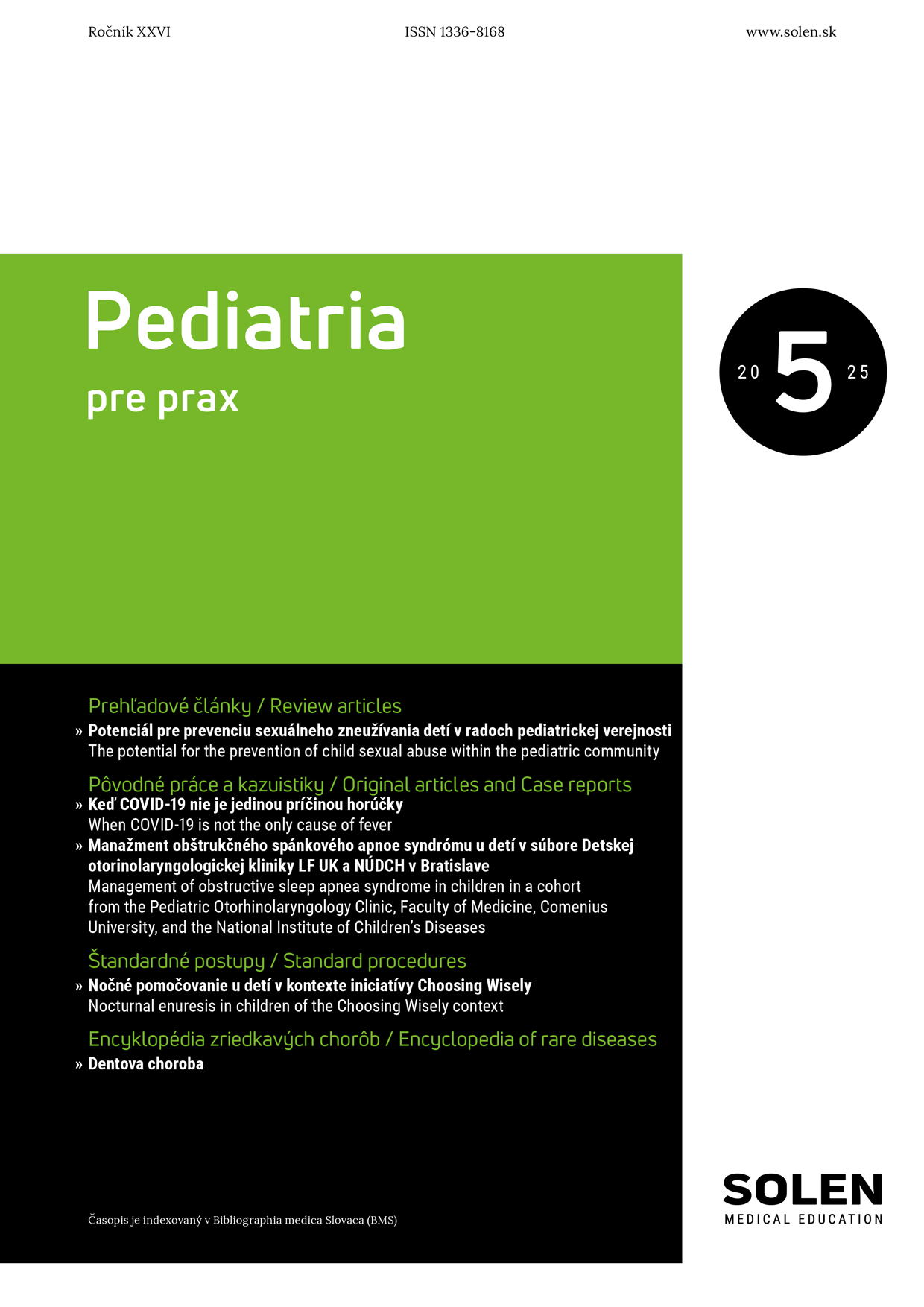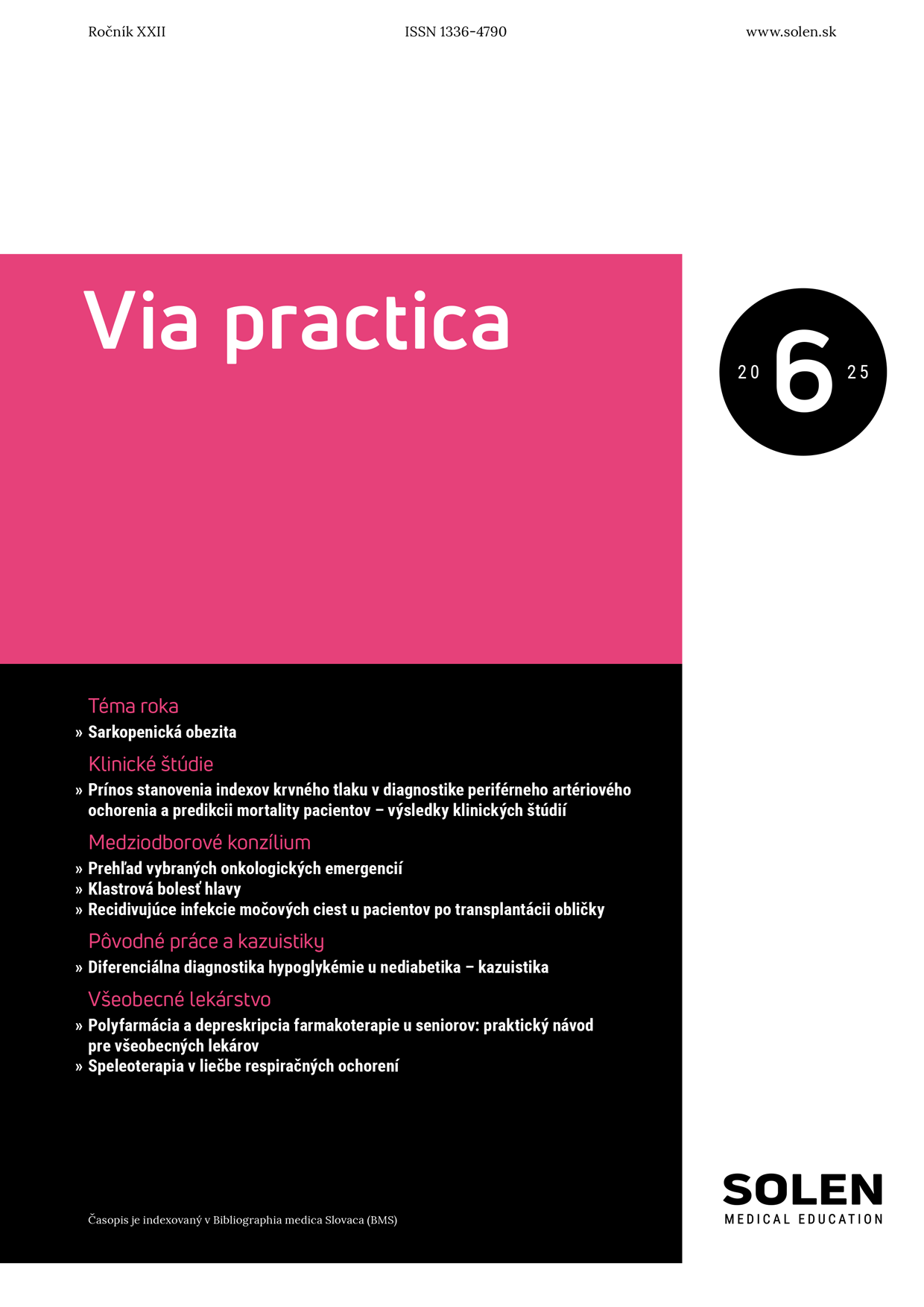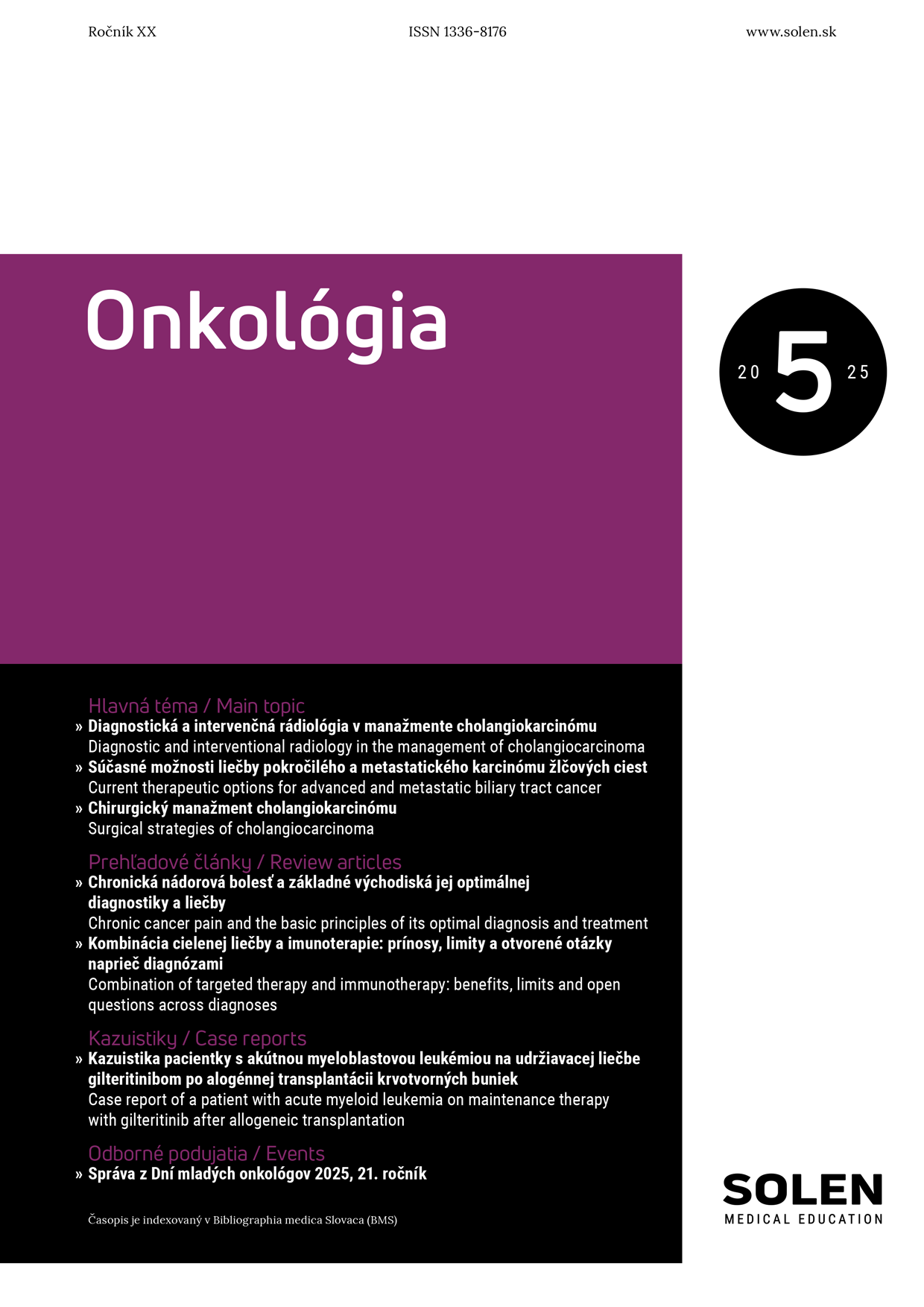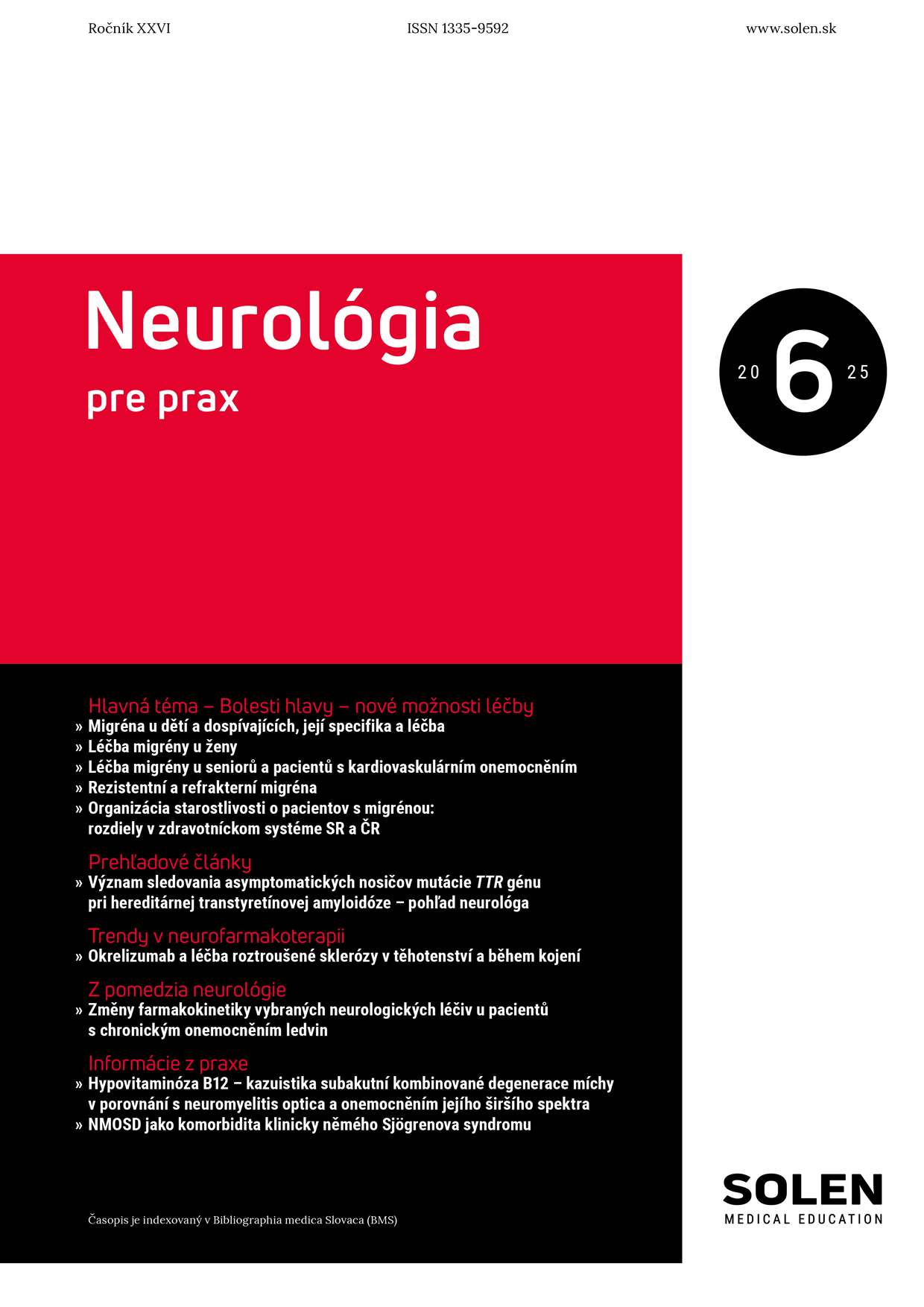Onkológia 2/2014
Effect of thrombotic risk factors on the occurrence of thrombotic complications in patients with essential thrombocytemia
Objective: Essential thrombocytemia (ET) is a myeloproliferative neoplasm (MPN) with a relatively benign course when compared with other MPN´s. But there are great interindividual differences between patients concerning the frequency and seriousness of occurrence of thrombotic and/or bleeding complications. Our goal was to assess how the risk factors of thrombosis (RF) influence the occurrence of complications during the course of ET. Patients and methods: Our group of patients consists of 567 patients from whole Slovakia with the diagnosis of ET treated with anagrelide, 196 (35 %) males and 371 (65 %) women with average age 56 years (range 18 – 92 years). The total follow-up time was 6 – 108 months. A questionnaire for registering of drug dosage and tolerance, adverse events, disease complications (bleeding, microvascular events, arterial and/or venous thromboses) and basic hematologic and biochemical parameters has been established. Results: We have found statistically significant negative influence of general as well as thrombophilic RF of thrombosis on thrombosis occurrence before as well as during the treatment. We have found that the disease specific risk factor – increased number of platelets – significantly correlates with thrombosis occurrence. Our results show that normalization of platelets number plays a crucial role in decreasing the risk of thrombosis. But the dosage of anagrelide is generally lower (f = 1,65 mg) than the maximally possible dose of 5 mg. We have observed that any thrombosis in anamnesis is also a RF of thrombosis further in the course of the disease. Adverse events have been found only in a minority of patients (12,7 %) and were usually only mild and transient. Conclusions: Complications of ET are caused not only by RF of the disease itself, but also by general as well as thrombophilic risk factors. High platelets numbers are also an adverse RF of thrombosis, as well as thrombosis before treatment. Therefore the effort to decrease platelets numbers is an important prevention of hemorrhagic and thrombotic complications. From this point of view the strategy „watch & wait“ in the situation, when we have the possibility to treat ET with modern non-cytostatic drugs (anagrelide, interferon-a), is no more actual. Slovak guidelines for the treatment of ET are in consistence with these findings.
Keywords: essential thrombocytemia, myeloproliferative disorders, anagrelide, thrombophilia, thrombosis, platelets, thrombotic risk factors.

















